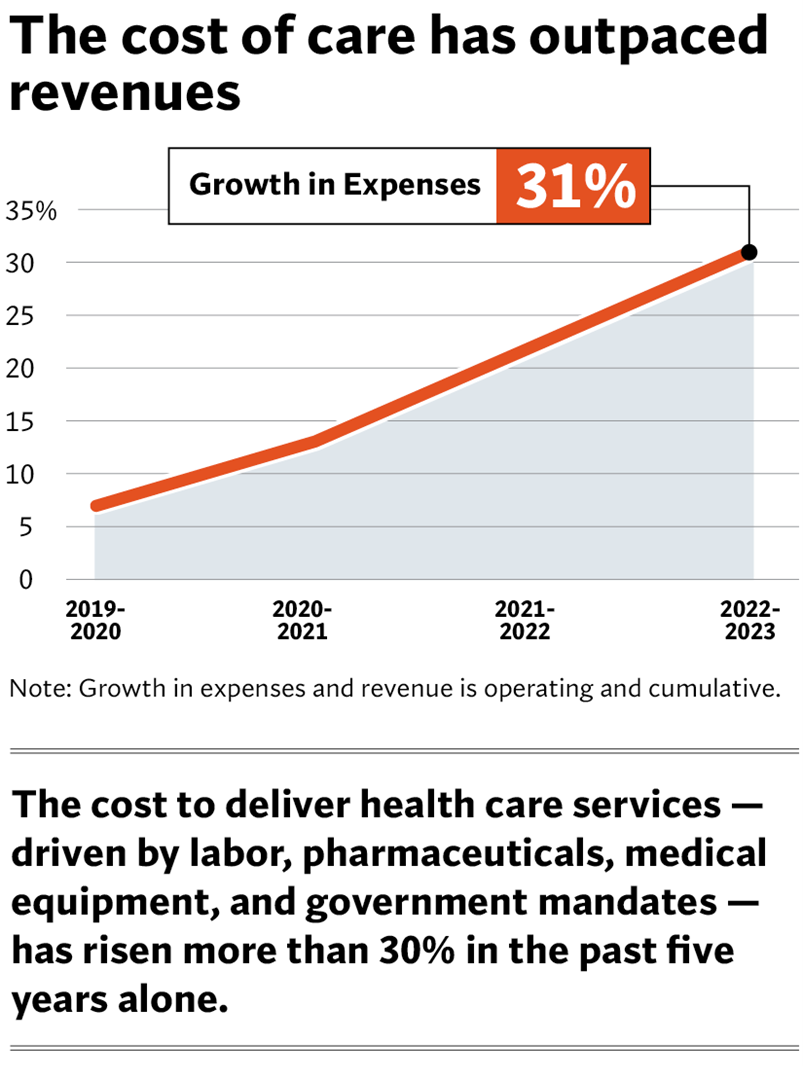Hospitals Need State, Federal Help to Protect Vital Health Care Services
The Issue
Vulnerable Californians who rely on the care provided by California hospitals are at risk. Driven by skyrocketing costs for labor, pharmaceuticals, regulatory mandates, and more, half (53%) of all hospitals statewide lose money every day to deliver patient care.
That isn’t sustainable. And California is already seeing the frightening result: rural health care services being cut to the bone, severe behavioral health care needs not being met, and more.
Adding to the challenge, reimbursement from government health insurers like Medi-Cal simply don’t cover the cost of delivering vital health care services — Medi-Cal pays just 80 cents for every dollar it costs to care for patients. Medicare even less at just 76 cents for every dollar. That means Californians covered by Medi-Cal have a hard time finding primary care doctors or specialists, experience longer wait times for appointments, and face uncertainty that their hospital care will always be available.

Hospital services are in greater jeopardy in areas that already need more support, where Medi-Cal is the predominant form of health coverage. Hospitals with the highest percentage of revenue from government payers — Medicare and Medi-Cal — have, on average, operating margins of negative 8%.
It is California’s most vulnerable who are suffering from this needless two-tiered health care system — seniors, children, individuals with disabilities, minorities, and those living below or close to the poverty line.
California hospitals make miracles a daily routine. They save the lives of extremely premature babies, extend the lives of cancer and other patients, improve the lives of those experiencing traumatic illness and bodily harm, and more.
This state-of-the-art care must be available to all Californians, including those covered by Medi-Cal and Medicare.
What’s Needed
To strengthen communities and reduce health disparities, California must protect and enhance funding that supports health care for millions covered by Medi-Cal and Medicare.
At the federal level, policymakers should prevent expansion of Medicare’s site-neutral payment policy to hospital outpatient departments, extend a delay of or eliminate entirely planned Medicaid disproportionate share hospital payment reductions, and support legislation to prevent service reduction or closure among rural hospitals.
California must ensure that resources intended for Medi-Cal are used to care for Medi-Cal patients, nothing else.